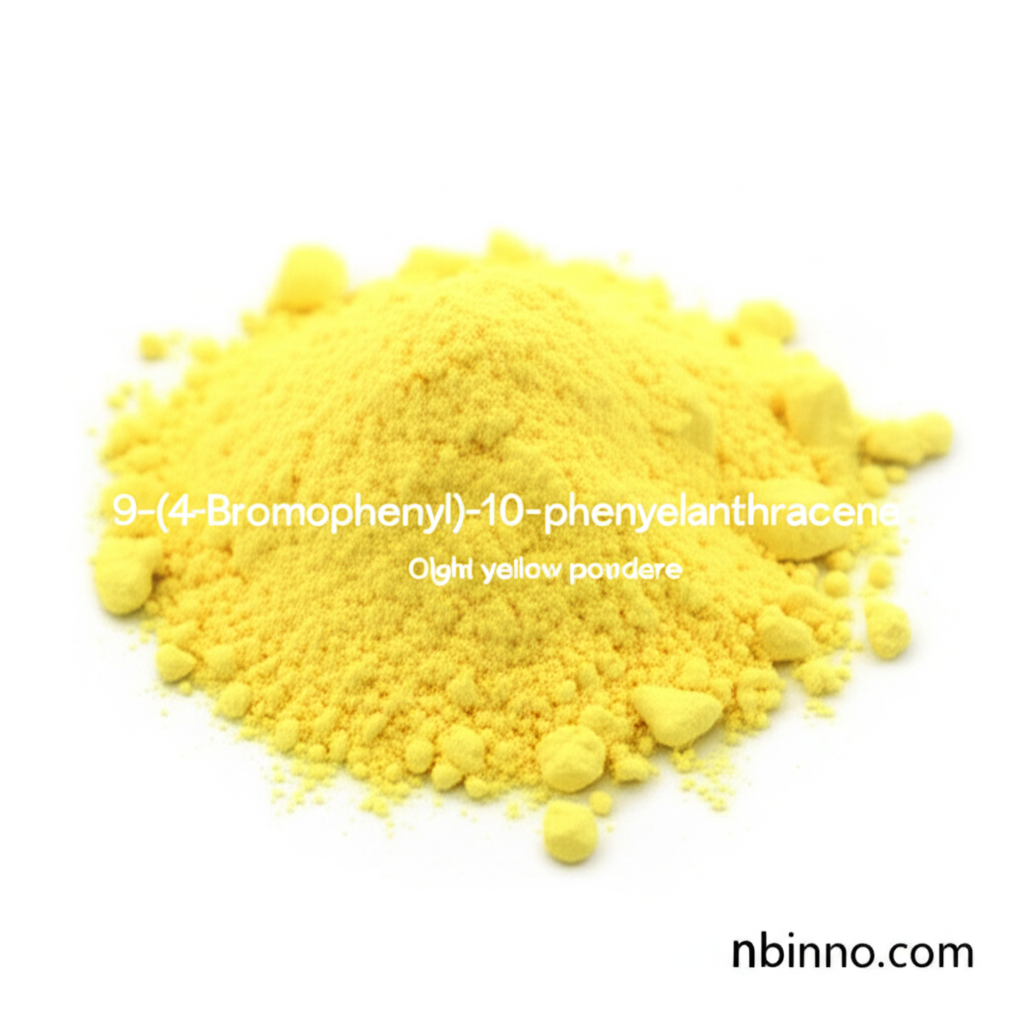Exploring 9-(4-Bromophenyl)-10-phenylanthracene: A Key OLED Intermediate
Discover the essential role of this advanced chemical in shaping the future of display technology.
Get a Quote & SampleProduct Core Value

9-(4-Bromophenyl)-10-phenylanthracene
This compound is a foundational building block for cutting-edge OLED display screens, contributing to thinner, more energy-efficient, and visually superior electronic devices. Its unique chemical structure allows it to participate in crucial synthesis pathways for next-generation displays.
- Leverage its high purity (≥99.0%) for reliable OLED display screen material production, ensuring consistent performance.
- Utilize this key OLED intermediate in advanced electronic materials synthesis, driving innovation in screen technology.
- Explore the chemical properties of CAS 625854-02-6 for optimized electronic component design and manufacturing.
- Understand the applications of 9-phenyl-10-(4-bromophenyl)anthracene in creating advanced display solutions.
Advantages Offered
Unmatched Purity for Superior Performance
Achieve exceptional results in OLED production by using a chemical intermediate with a guaranteed purity of 99.0% or higher, minimizing unwanted side reactions and ensuring optimal light emission.
Enabling Next-Generation Displays
As a critical component in the synthesis of advanced electronic materials, this compound empowers the creation of OLEDs that are thinner, more flexible, and consume less energy.
Versatile Chemical Reactivity
The presence of bromine and phenyl groups makes this molecule highly suitable for various coupling reactions, essential for building complex organic semiconductor structures used in emissive layers.
Key Applications
OLED Display Technology
This compound serves as a vital building block for organic light-emitting diodes, directly contributing to the vibrant colors and thin profiles of modern displays.
Electronic Chemical Synthesis
Its structured chemical nature makes it an invaluable component in the broader field of electronic chemical synthesis, enabling the creation of specialized materials.
Research and Development
Researchers utilize this intermediate to explore new molecular designs and functionalities for advanced organic electronics, pushing the boundaries of material science.
High-Performance Materials
The compound's stability and reactivity make it suitable for creating high-performance materials used in demanding electronic applications.
